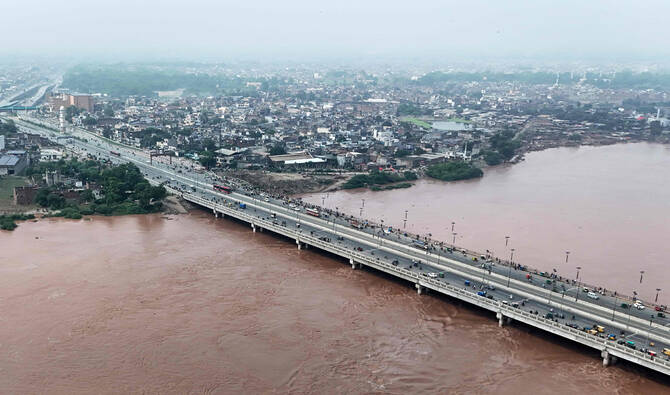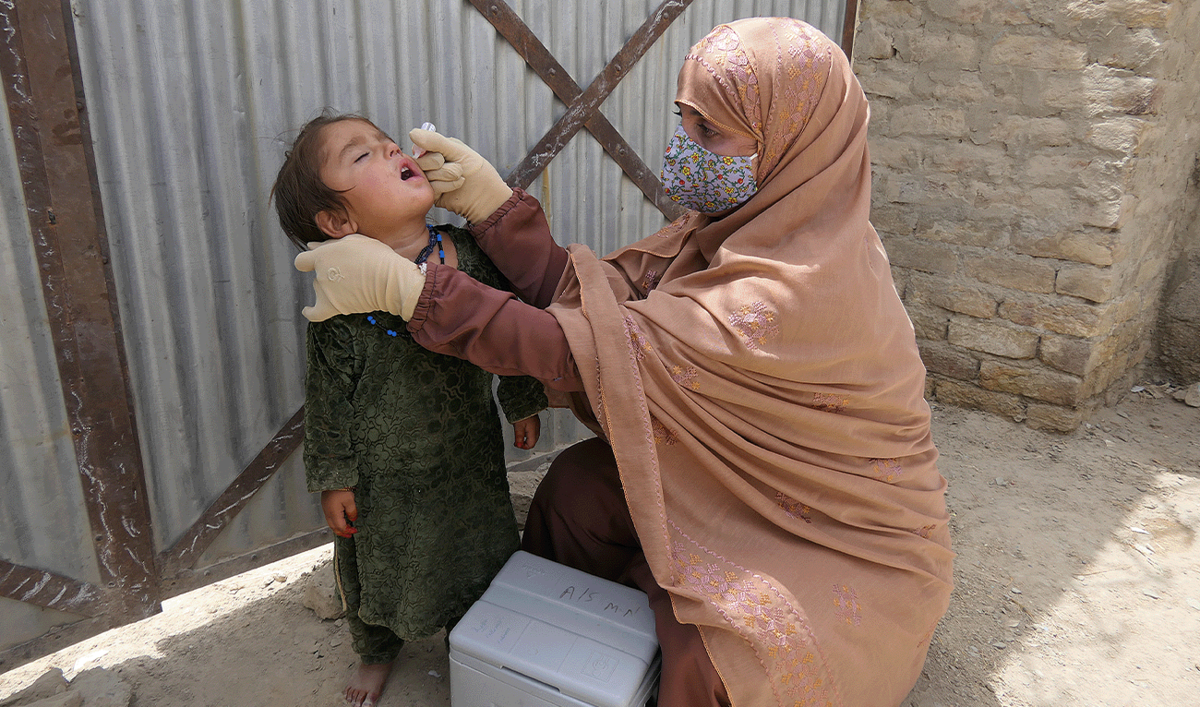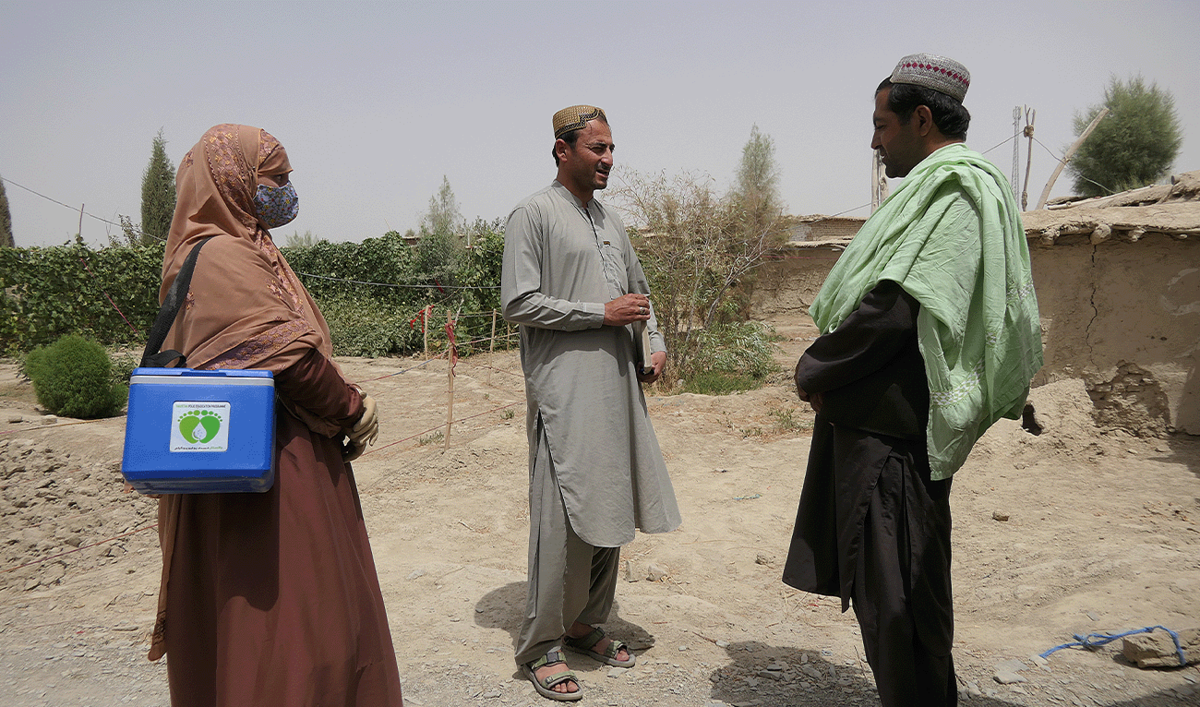WAZIRABAD: The deadly floods that have ravaged Pakistanãs Punjab province have not only claimed about 20 lives but have also devastated the livelihoods of countless others, with families watching helplessly as their crops were swallowed by floodwaters and livestock swept away.
With the lifelines of their survival vanishing in moments, what remains is a haunting landscape of destruction, despair and the silent grief of those left behind.
The floods began in the eastern province of Punjab on Monday when heavy rains triggered sudden water releases from Indian dams on the Sutlej, Chenab and Ravi rivers, making it the worst deluge for the region in about four decades.
In Wazirabad district, heart-wrenching scenes are visible everywhere, with more than 25 villages submerged and nearly 8,000 residents displaced. People mourn the loss of their crops and cattle, and on Friday, two days after the record-breaking flood in the Chenab River, many were still trying to move their animals to safety while watching their submerged rice fields with helpless eyes.
One man, Muhammad Afzal, a resident of the Koth Kahlu area, had been planning to marry one of his two daughters after harvesting his rice crop, but those dreams now lie in ruins.
ãSuddenly, so much water came with a great speed that we have never seen in our lives,ã he told Arab News. ãWe got the warning late, and our livestock was swept away. Everyone lost 10, 15, 20 animals.ã

A photo taken on August 29, 2025, shows a flood-damaged road in Wazirabad district of Punjab province, Pakistan. (AN Photo)
He added his entire yearãs harvest had been destroyed:
ãI cultivated rice on 117 acres and corn on 20 acres, but itãs all finished. This is Allahãs will regarding what will happen.ã
Punjab is considered the breadbasket of Pakistan due to its significant contribution to the country's agriculture, particularly in staple crops like rice and wheat. The ongoing floods now pose a severe threat to Pakistanãs already struggling economy, with agriculture accounting for 23 percent of the countryãs GDP.
Zeeshan Khokhar, a local journalist covering the catastrophe, described the emotional toll on residents.
"I have seen countless people in tears over the past two days," he said. "Many refused to leave their beloved homes and livestock despite repeated pleas from rescue workers."
Another local, Furqan Ahmad, shared his loss, saying he lost his cow and his entire rice crop grown on five acres of land.
ãRescue teams didnãt come in time," he added, his voice heavy with sorrow. "I tried everything, but I couldnãt save my animal.ã
Many people have complained that their surviving animals were swept away by the floodwaters into other areas, but there is no way to retrieve them.
Those currently in possession of the animals are making their own claims, and without a proper identification system, it is nearly impossible to prove ownership.
ãThereãs no way to tell which buffalo belongs to whom,ã one of them lamented.
Farmers in the area also expressed frustration over the already low wheat prices this year, saying the floods have completely crippled them financially.
Many have been forced to migrate to urban centers along with their remaining livestock in search of safety and support.
Meanwhile, those who have stayed fear that further rainfall in the upper regions of neighboring India could unleash even more devastation in the coming days.
Although Punjab Chief Minister Maryam Nawaz has promised compensation for farmers affected by the floods, many remain skeptical, pointing out that similar promises in the past were never fulfilled.

This aerial photograph shows commuters driving on a bridge as floodwaters flow through the Ravi river following a rise in water levels near residential areas in Shahdara, Lahore on August 29, 2025. (AFP)
Authorities are now working to provide relief supplies, medical assistance, and temporary shelters for the affected populations.
Efforts are also underway to prevent the outbreak of diseases ã particularly waterborne and skin infections ã in the flood-impacted regions.





















